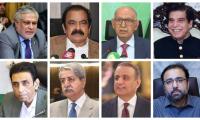Whether in a bustling square or a quiet corner, protests reflect the ongoing struggle between people and power. Beneath those banners, chants and raised fists lies a deeper psychological drama. What drives people to leave the comfort of their daily routines and risk everything to stand in the streets?
Protests are often seen as chaotic and disruptive. The psychology of a protest and the mindset of protesters reveal much about the human response to injustice and the need for societal change.
At the core of any protest lies a perceived sense of injustice. When people feel they are being denied basic rights, treated unfairly, or subjected to discrimination, a psychological shift begins. A sense of deprivation thus triggers people to resist. It is not absolute poverty that fuels unrest but the feeling of being left behind compared to others. When people see a gap between their current reality and their expectations, it ignites frustration which often leads to collective action.
But protesters are not simply driven by material deprivation. There is also an emotional component. People need to feel that they are part of something larger than themselves, that their voices matter, and that they can influence change. Protests offer that sense of belonging and purpose. They are an outlet for collective anger and a space where individuals feel their frustrations are validated by others who share the same grievances.
This collective energy can be powerful and intoxicating and can often create a sense of empowerment in those who participate. This phenomenon, known as deindividuation, explains why peaceful protests can sometimes escalate into violent clashes. When individuals feel anonymous in a crowd, they may be more willing to engage in aggressive-destructive behaviour.
The use of symbols and slogans also taps into the psychology of protesters. These elements serve as rallying points that unify participants and create a shared language of resistance. Slogans like ‘We are the 99%’ during the Occupy Wall Street protests or ‘Black Lives Matter’ in recent US demonstrations are more than just words; they are expressions of collective identity and purpose. They simplify complex social issues into digestible phrases that resonate emotionally with protestors.
Protests are not merely spontaneous outbursts of anger. They are often carefully planned, with organisers understanding the psychological impact of timing, location and media coverage. The visual element of protests is crucial. Crowds gathered in front of government buildings or blocking major roads create powerful imagery that can attract media attention and, consequently, public support. The strategic use of social media has also amplified the psychological impact of protests. The psychology of protests in the digital age also relies heavily on virality. Platforms like X, Facebook and Instagram etc. allow protestors to share real-time updates that help them galvanise support from people across the globe.
In Pakistan, the psychology of protests is shaped by a mesh of political, religious and social factors. Over the years, Pakistan has seen its fair share of protests, some peaceful and others violent. From the constitutional crisis of the initial years of independence to the latest PTI sit-ins, these protests reveal much about the mindset of Pakistani protesters.
One key psychological driver of protests in Pakistan is the pervasive sense of disenfranchisement. For decades, Pakistan has struggled with issues of inequality, corruption and political instability. The youth, which makes up a significant portion of the population, feels particularly disillusioned. According to a 2023 report by Gallup Pakistan, 72 per cent of young Pakistanis feel that the political system is rigged against them, and 68 per cent believe that their economic opportunities are limited. This widespread sense of powerlessness has created fertile ground for protests, as people seek an outlet for their frustration.
Religious sentiments also play a significant role in shaping the psychology of Pakistani protests. In many instances, faith becomes the rallying point for collective action. A lot of examples of such protests can be quoted here. The psychological impact of invoking religious outrage cannot be overstated in a deeply religious society like Pakistan. This moral justification makes their cause seem righteous which leads to widespread support and participation.
The dynamics of crowd behaviour in Pakistan are also influenced by a history of political manipulation. Political parties and religious groups often use protests as a tool to advance their agendas. The power of charismatic leaders, the use of religious symbolism, and the promise of justice are all part of the psychological arsenal used to mobilise the people.
Another important factor in the psychology of Pakistani protesters is the role of fear and repression. The state’s heavy-handed response to protests, including the use of tear gas, arrests and, oftentimes, violence, creates a climate of fear. However, fear can work both ways. In some cases, it suppresses dissent, but in others, it fuels additional anger. The government’s violent response can serve to deepen the protestors’ resolve as they may see themselves as victims of state repression.
Despite the frequent occurrence of protests in Pakistan, there is a visible reluctance among large segments of the population to take to the streets. This hesitancy can be explained by what psychologists refer to as the ‘cost-benefit analysis’ that individuals perform before joining a protest.
In a country where the state often responds with force, many potential protesters weigh the risks and decide that the cost of protesting – job loss, injury, or imprisonment – is too high. This is particularly true for the middle class, which, as studies show, tends to prioritise stability over radical change. The impoverished working class, on the other hand, may feel that they have less to lose, which explains why they are often at the forefront of protests.
Decades of political instability and broken promises have created a psychological barrier for many. The perception that protests do not lead to real change dampens the willingness to participate. According to a 2024 survey, 64 per cent of Pakistanis believe that protests are ineffective in bringing about long-term political or social reforms. This sense of hopelessness is perhaps the most significant psychological discouragement for movements seeking change.
While the desire for change drives many to the streets, the perceived ineffectiveness of protests and the fear of repercussions often deter participation. The psychology of protests reveals not only the factors behind societal upheaval but also the potential for constructive societal progress. Ultimately, understanding these factors is crucial to understanding the complex nature of social movements in Pakistan and beyond.
The writer is a scholar of
history and politics.
He can be reached at:
naumanahmadbhatti@gmail.com
There are over 11 million Pakistanis settled abroad, out of which around six million work in Gulf and Middle East
This year alone, US Treasury would have to roll-over $10 to $14 trillion in maturing short-term debt
Tear gas no longer marks just protest sites; it paints entire cities as battlegrounds but then again, PTI did it first
Political structures and governance systems have been central to economic and social development
It is confirmed now 40 Pakistanis had died after boat of migrants had capsized in sea near Greece
Many people believe that in future, AI will play an even more significant role in their lives







